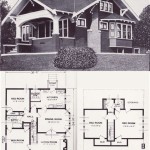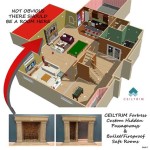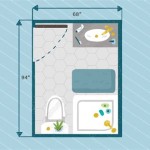Two-Bedroom Small House Plan: Optimizing Space and Functionality
The demand for smaller, more efficient housing options is steadily increasing. This trend is driven by various factors, including rising land costs, a desire for simpler living, and growing environmental awareness. Two-bedroom small house plans offer a practical solution for individuals, couples, small families, or even retirees looking to downsize without sacrificing essential living space. These plans necessitate careful consideration of design principles to maximize functionality, comfort, and aesthetic appeal within a limited footprint.
Designing a two-bedroom small house requires a strategic approach that prioritizes efficient space utilization. Every square foot must be carefully considered and allocated to ensure the home meets the needs of its occupants. This process involves balancing the need for private spaces, such as bedrooms and bathrooms, with communal areas like the living room, kitchen, and dining area. The overall design must aim to create a comfortable and liveable environment, preventing the feeling of being cramped or confined.
Successful two-bedroom small house plans often incorporate open-concept layouts, integrated storage solutions, and thoughtful material selection. These elements work together to create a sense of spaciousness and visual appeal. Detailed planning, including considerations for natural light, furniture placement, and traffic flow, is critical to achieving a well-functioning and aesthetically pleasing small home.
Efficient Space Planning and Layout Design
The core principle behind a successful two-bedroom small house plan is efficient space planning. This involves carefully analyzing the needs and lifestyle of the occupants to determine the optimal layout for each room. Prioritizing essential features and eliminating unnecessary space is crucial in smaller homes. Open-concept layouts are frequently employed to combine the living room, dining area, and kitchen into a single, multi-functional space. This approach eliminates walls and partitions, creating a more open and airy feel.
Strategic furniture placement is another essential aspect of space planning. Multifunctional furniture, such as sofa beds, storage ottomans, and foldable tables, can maximize usable space and provide flexible solutions for different activities. Vertical space is often utilized by incorporating shelving, cabinets, and other storage solutions that reach towards the ceiling, thereby minimizing clutter and maximizing floor space.
Consideration must also be given to traffic flow within the house. Hallways should be minimized or eliminated to avoid wasted space. The placement of doors and windows should be carefully considered to ensure they do not obstruct movement or interfere with furniture placement. Designing a clear and intuitive flow between rooms will enhance the overall liveability of the house.
The size and configuration of the bedrooms are crucial considerations. While both bedrooms may not require equal size, the master bedroom typically receives priority. Adequate storage space in the form of closets or built-in wardrobes is essential. The placement of windows should maximize natural light while considering privacy. Smart design choices, such as using lighter wall colors and minimizing bulky furniture, can contribute to a more spacious and inviting atmosphere in the bedrooms.
The design of the bathroom(s) should also focus on efficiency. Compact fixtures, such as wall-mounted toilets and corner sinks, can save valuable space. Utilizing vertical space with shelving and cabinets is also important for storing toiletries and other bathroom essentials. Good ventilation and natural light are crucial for preventing moisture buildup and creating a comfortable environment.
Maximizing Light and Ventilation
Natural light and ventilation are essential elements in any home, but they are particularly important in small spaces. Ample natural light can make a small house feel larger and more inviting, while proper ventilation helps to maintain a healthy and comfortable indoor environment. Incorporating large windows, skylights, and light tubes can significantly increase the amount of natural light entering the home. The placement of windows should be carefully considered to maximize sunlight exposure throughout the day.
The orientation of the house in relation to the sun is another important factor. Positioning the house to take advantage of solar gain in the winter months can help to reduce heating costs. Overhangs and awnings can be used to shade windows during the summer months, preventing excessive heat buildup. A south-facing orientation is generally considered optimal for maximizing solar gain in the northern hemisphere.
Proper ventilation is crucial for removing stale air, moisture, and pollutants from the home. Cross-ventilation, which involves placing windows on opposite sides of the house, can effectively circulate air. Operable windows should be strategically placed to capture prevailing breezes. The use of ceiling fans and exhaust fans can also help to improve ventilation.
The selection of window treatments can also impact the amount of light and ventilation in the home. Lightweight curtains and blinds allow natural light to filter through while providing privacy. Solar shades can help to reduce glare and heat gain while still allowing visibility. The strategic use of mirrors can also help to reflect light and create a sense of spaciousness.
In addition to natural light and ventilation, adequate artificial lighting is also essential. Layering different types of lighting, such as ambient lighting, task lighting, and accent lighting, can create a more comfortable and functional environment. LED lighting is a popular choice due to its energy efficiency and long lifespan. Dimmers can be used to adjust the brightness of lights, allowing occupants to customize the lighting to suit their needs.
Storage Solutions and Multifunctional Design
Storage is a critical concern in small house plans. Clever and integrated storage solutions are essential for maximizing space and minimizing clutter. Built-in storage, such as bookshelves, cabinets, and drawers, can seamlessly blend into the design of the house and provide ample storage without taking up extra floor space. Utilizing space under stairs, in attics, and in crawl spaces can also provide additional storage opportunities.
Multifunctional design is another key strategy for maximizing space in small homes. Furniture that serves multiple purposes, such as sofa beds, storage ottomans, and foldable tables, can provide flexible solutions for different activities. Rooms that can be easily adapted to serve different functions, such as a home office that can double as a guest room, can also significantly increase the usability of the space.
Vertical storage is particularly important in small spaces. Shelving units that reach towards the ceiling can provide ample storage without taking up valuable floor space. Wall-mounted cabinets and shelves can also help to keep items off the floor and create a more open and airy feel. Utilizing the height of the walls can significantly increase the amount of usable storage space in the home.
The kitchen is often a focal point in small house plans, and efficient storage solutions are essential for keeping it organized and functional. Pull-out shelves, drawer dividers, and spice racks can help to maximize storage space in cabinets and drawers. Utilizing wall space with pot racks, utensil holders, and spice shelves can also free up valuable counter space. A well-organized kitchen is crucial for creating a comfortable and efficient cooking environment.
In the bedrooms, maximizing closet space is essential. Organizing systems, such as adjustable shelves, hanging rods, and drawers, can help to maximize the use of closet space. Using under-bed storage containers can also provide additional storage for clothes, shoes, and other items. A well-organized closet can significantly reduce clutter and make it easier to find items.
Furthermore, the exterior spaces can be designed to incorporate storage. A shed or outdoor storage box can be used to store gardening tools, outdoor furniture, and other items. Creating a small patio or deck with built-in seating and storage can also extend the living space and provide additional storage opportunities.
By creatively implementing efficient space planning, maximizing light and ventilation, and integrating clever storage solutions, a two-bedroom small house plan can offer a comfortable, functional, and aesthetically pleasing living environment. Detailed attention to these crucial elements ensures the homeowners can enjoy the benefits of a smaller footprint without compromising on essential living needs.

Two Bedroom Small House Plan Cool Concepts Design Plans

Cottage Style House Plan 2 Beds 1 Baths 856 Sq Ft 14 239 In 2024 Cabin Floor Plans Bedroom Two

Pin On Small House Plans

Unique Small 2 Bedroom House Plans Cabin Cottage

Two Bedroom Small House Design Shd 2024030 Pinoy Eplans

The Best 2 Bedroom Tiny House Plans Houseplans Blog Com

2 Bedroom Tiny House Plans Blog Eplans Com

Unique Small 2 Bedroom House Plans Cabin Cottage

2 Room House Plans Low Cost Bedroom Plan Nethouseplansnethouseplans

Unique 2 Bedrooms House Plans With Photos New Home Design De4 Small Floor Two Bedroom Plan Tiny








